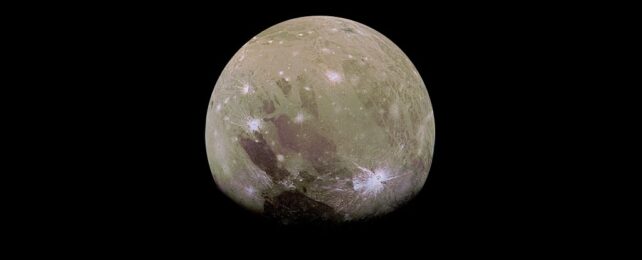
The moon has shrunk by more than 45 metres in circumference over the last few hundred million years because of its core gradually cooling.

Saturn's small, crater-covered moon Mimas may have a vast ocean under its thick icy surface, according to a new paper.

On February 3, 2024, NASA’s Juno spacecraft made a second close flyby of Io, the third largest of Jupiter’s moons. We were able to see a volcunic erruption there like never before.

New research shows the early lunar crust which makes up the surface of the Moon was considerably enriched in water more than 4 billion years ago, counter to previously held understanding.

Jupiter's largest moon, Ganymede, features a surprisingly strong magnetic field for its size. Now, a new experimental study has put one of the leading models of core dynamics to the test: the formation of crystalized 'iron snow'.

A study zooms in on data that NASA’s Cassini gathered at Saturn’s icy moon and finds evidence of a key ingredient for life and a supercharged source of energy to fuel it.

Most of what we know about Enceladus and its ice-covered ocean comes from the Cassini mission. New research based on Cassini data strengthens the idea that Enceladus has the chemicals necessary for life.

Phosphorus is the least abundant essential element necessary for life, and its recent detection in icy grains from Enceladus could redefine how we look at life beyond Earth.

This plume is larger than any previously observed on the moon and may contain the necessary chemicals for life coming from below its icy surface.

New discoveries by a team of astronomers added 62 new moons to Saturn’s existing 83, bringing its total to 145. Therefore, Saturn is the first planet known to have more than 100 moons.

The James Webb Space Telescope continues to wow astronomers and the public alike with its infrared view of deep space targets. Now its Uranus.

Scientists now believe Miranda and Ariel, the smallest and second-smallest of Uranus’s five major moons, could be expelling vapour plumes - which on other moons in the solar system are thought to come from subsurface oceans.

Two newly discovered forms of frozen salt water could help scientists resolve a mystery concerning the Solar System's ice-encrusted moons.

Astronomers have counted 12 previously unknown moons in orbit around our Solar System's biggest planet, bringing the known total to 92, and leaving Saturn, with its measly count of 83, in the dust.

Compared to most places you might wander in the Solar System, Titan, the giant moon of Saturn, is in many ways strangely familiar to Earth.